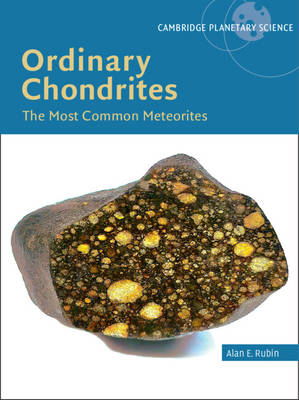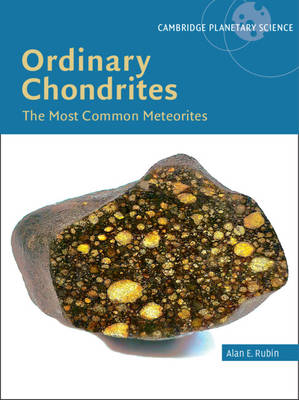
Je cadeautjes zeker op tijd in huis hebben voor de feestdagen? Kom langs in onze winkels en vind het perfecte geschenk!
- Afhalen na 1 uur in een winkel met voorraad
- Gratis thuislevering in België vanaf € 30
- Ruim aanbod met 7 miljoen producten
Je cadeautjes zeker op tijd in huis hebben voor de feestdagen? Kom langs in onze winkels en vind het perfecte geschenk!
- Afhalen na 1 uur in een winkel met voorraad
- Gratis thuislevering in België vanaf € 30
- Ruim aanbod met 7 miljoen producten
Zoeken
Omschrijving
Ordinary chondrites, the most abundant meteorites, constitute about 80% of meteorite falls and are essential to our understanding of cosmochemistry. They provide important information about planetary accretion, the early Solar System, and the geological history of asteroids, including such processes as thermal metamorphism, shock metamorphism, and aqueous alteration. This comprehensive guide begins with meteorite classifications and useful definitions, followed by a discussion of fall phenomena and terrestrial weathering. It provides a detailed overview of the three main ordinary-chondrite groups, which include the most primitive, least-processed meteorites known. Compositional differences among these samples furnish clues to the nature of processes operating in the solar nebula 4.5 billion years ago. These rocks also disclose information on the nature and origin of chondrules, matrix material, and metallic iron-nickel grains. This book is a valuable resource for graduate students and research professionals interested in meteorites and planetary science, as well as amateur meteorite enthusiasts.
Specificaties
Betrokkenen
- Auteur(s):
- Uitgeverij:
Inhoud
- Aantal bladzijden:
- 370
- Taal:
- Engels
- Reeks:
Eigenschappen
- Productcode (EAN):
- 9781009656139
- Verschijningsdatum:
- 30/04/2026
- Uitvoering:
- Hardcover
- Formaat:
- Genaaid
- Gewicht:
- 500 g

Alleen bij Standaard Boekhandel
+ 351 punten op je klantenkaart van Standaard Boekhandel
Beoordelingen
We publiceren alleen reviews die voldoen aan de voorwaarden voor reviews. Bekijk onze voorwaarden voor reviews.









